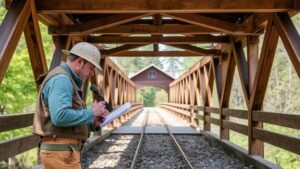Recognizing Burn Patterns on Maps That Reveal Secret Trails
Recognizing Burn Patterns on Maps That Reveal Secret Trails
Understanding burn patterns on maps is pivotal for revealing hidden trails and pathways often obscured by vegetation or other environmental factors. These remnants of past fires can serve as guides for navigation, ecological studies, and even historical explorations. This article delves into the significance of burn patterns and how one can effectively interpret them on various mapping platforms.
The Science Behind Burn Patterns
Burn patterns are the traces left on the landscape from wildfires and controlled burns. e patterns are shaped by numerous factors, including topography, wind direction, soil type, and vegetation density. When a fire occurs, it changes the landscape visibly and environmentally, making it a vital area of study for ecologists, land managers, and adventurers alike.
For example, studies have shown that the 2016 Fort McMurray wildfire in Alberta, Canada, resulted in observable changes in topography and vegetation cover that can be analyzed through remote sensing technologies and detailed maps. Such analyses can help to identify trail systems that may have been used historically or as wildlife pathways, as animals often gravitate toward areas that have undergone change.
Interpreting Burn Patterns
To effectively recognize burn patterns on maps, it is essential to familiarize oneself with various mapping tools and techniques. Satellite imagery, aerial photography, and GIS (Geographic Information Systems) are valuable resources. Burn scars and areas of regeneration can be distinguished based on color shifts in satellite imagery, which often indicates varying vegetation health and density post-fire.
One practical example is using NDVI (Normalized Difference Vegetation Index) maps, which analyze the difference between near-infrared and visible light reflectance. This technique helps identify the health of vegetation, revealing areas densely populated by flora that survived or regenerated after a wildfire, which can lead to secret trails.
- Burn Scars: These are areas that have experienced fire damage, often appearing as darker patches on maps.
- Regeneration Zones: Identified by lighter or patchy colors often indicating new growth.
Identifying Secret Trails
Burn patterns often lead adventurers and explorers to discover secret trails, which can be invaluable for hiking, mountain biking, or even conservation efforts. Trails that have not been maintained or recognized in historical maps can emerge from areas affected by fire, where the terrain has changed or paths have become more visible due to the absence of dense vegetation.
For example, the Appalachian Trail in the Eastern United States has areas where trails have been obscured by overgrowth but can be identified through recent burn maps showing areas of disturbance. By mapping these regions, hikers can not only plan safer routes but also discover off-the-beaten-path trails less frequented by the public.
Real-World Applications
The recognition of burn patterns on maps has significant implications for various fields, from ecology to landscape architecture. For example, environmental agencies often conduct burn area rehabilitations, studying burn patterns to prioritize areas for restoration based on trail accessibility and ecological significance.
- Wildlife Management: Understanding how wildlife adapts to post-fire landscapes can also inform conservation strategies.
- Disaster Recovery Planning: After wildfires, recognizing burned areas can aid in effective recovery efforts, ensuring critical habitats are restored.
Actionable Takeaways
For those looking to utilize burn patterns in their land navigation or exploration endeavors, consider the following steps:
- Familiarize Yourself with Mapping Tools: Invest time in learning how to use GIS software, satellite imagery analysis, and other mapping technologies.
- Study Local Fire History: Obtain records of past wildfires in your area of interest to better understand the effects of fire and identify potential trails.
- Engage with Local Conservation Groups: Collaborating with local ecological or conservation organizations can provide insight into trails and areas affected by fire.
To wrap up, recognizing burn patterns on maps reveals hidden trails and provides insights into ecological transformations. By leveraging modern mapping techniques and understanding fires impact on the landscape, adventurers and conservationists alike can unlock new pathways while contributing to the stewardship of the environment.



